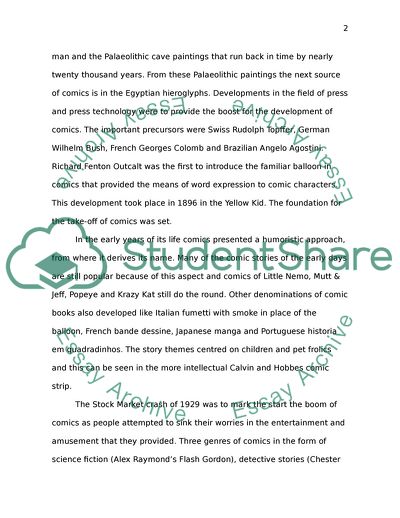Cite this document
(Is Comics a Cultural Medium or a Genre Essay Example | Topics and Well Written Essays - 1500 words, n.d.)
Is Comics a Cultural Medium or a Genre Essay Example | Topics and Well Written Essays - 1500 words. https://studentshare.org/culture/1704845-is-comics-a-cultural-medium-or-a-genre
Is Comics a Cultural Medium or a Genre Essay Example | Topics and Well Written Essays - 1500 words. https://studentshare.org/culture/1704845-is-comics-a-cultural-medium-or-a-genre
(Is Comics a Cultural Medium or a Genre Essay Example | Topics and Well Written Essays - 1500 Words)
Is Comics a Cultural Medium or a Genre Essay Example | Topics and Well Written Essays - 1500 Words. https://studentshare.org/culture/1704845-is-comics-a-cultural-medium-or-a-genre.
Is Comics a Cultural Medium or a Genre Essay Example | Topics and Well Written Essays - 1500 Words. https://studentshare.org/culture/1704845-is-comics-a-cultural-medium-or-a-genre.
“Is Comics a Cultural Medium or a Genre Essay Example | Topics and Well Written Essays - 1500 Words”. https://studentshare.org/culture/1704845-is-comics-a-cultural-medium-or-a-genre.


